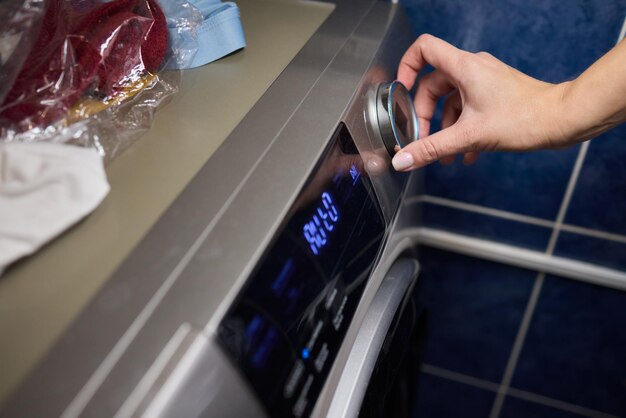What’s the Ideal Temperature for Your Refrigerator and Why It Matters
Opening your refrigerator to find spoiled food can be frustrating and wasteful. One common culprit might be an incorrect refrigerator temperature. Ensuring the right temperature in your refrigerator is crucial for preserving food quality and safety. In this guide, we’ll delve into everything you need to know about refrigerator temperatures, explore tips for setting it correctly, and reveal the consequences of a poorly set fridge.
🥶 Why Refrigerator Temperature Is Important
Refrigerators have a single job: keeping your food fresh. The temperature inside plays a significant role in how well they accomplish this task. Here’s why getting the temperature right is critical:
- Food Safety: Bacteria that can cause foodborne illnesses thrive in warmer environments. A cooler fridge slows down the spoilage process by inhibiting bacterial growth.
- Preservation: Correct temperatures help maintain the taste and nutritional value of your food. Fruits, vegetables, dairy, and meats are particularly sensitive to temperature and can quickly lose their freshness if not stored properly.
- Energy Efficiency: Setting your refrigerator temperature correctly can contribute to energy savings, as the appliance doesn’t have to work as hard to maintain unnecessary low temperatures.
What Is the Ideal Refrigerator Temperature?
The optimal temperature for your refrigerator is around 37°F (3°C), with a range that keeps all sections of your fridge safe and efficient. To ensure the entire refrigerator stays at an appropriate temperature, refrigerator compasses typically suggest a setting between 35°F and 38°F (1.7°C to 3.3°C).
The Freezer Compartment
Equally important is your freezer, where temperatures should be kept at or below 0°F (-18°C). This temperature halts bacterial growth almost completely, allowing long-term storage of your frozen goods.
How to Measure the Temperature in Your Refrigerator
Even if you set your temperature dial correctly, it’s wise to periodically check if your fridge maintains the desired temperature. Here’s how to do it:
- Use a Refrigerator Thermometer: This inexpensive tool offers an accurate reading of your fridge’s temperature.
- Placement Matters: Place the thermometer in the center of your fridge, ideally in a glass of water, to gauge average compartment temperatures effectively.
- Check Regularly: Check the temperatures weekly or after loading the fridge with groceries to see if temperatures fluctuate.
Common Refrigerator Temperature Problems and Solutions
Even with diligent monitoring, refrigerators can develop temperature issues due to various causes. Here are common problems and ways to address them:
Refrigerator is Too Warm
- Blocked Vents: Ensure that food packages do not obstruct internal air vents, facilitating proper cold air circulation.
- Door Seals: Check the door gaskets for any gaps or tears, which can let warm air seep in.
- Frequent Opening: Limit how often and how long the fridge door is left open to keep the cold confined.
Refrigerator is Too Cold
- Temperature Settings: Check that your temperature dial is not set too low.
- Contents Organization: Avoid overloading the fridge as blocked vents can also cause temperature imbalance inside.
- Thermostat Malfunction: If there’s an electronic malfunction, professional help may be needed to fix the thermostat.
Maximizing Refrigerator Efficiency
Proper maintenance of your refrigerator extends beyond checking temperatures. To maximize efficiency:
- Regular Cleaning: Clean your refrigerator coils and interior regularly. Dusty coils can increase energy use and lead to temperature inconsistencies.
- Proper Location: Ensure your fridge is placed wisely, away from heat sources like ovens, stoves, or direct sunlight.
- Space for Airflow: Position your refrigerator with adequate clearance from walls to allow good ventilation.
Tips for Storing Food Safely
Knowing how to organize your fridge can also aid in maintaining proper temperatures and prolonging the lifespan of stored goods.
Organization Methods
- Top Shelves: Ideal for drinks and ready-to-eat foods.
- Middle Shelves: Store dairy products here, where temperatures generally remain consistent.
- Bottom Shelf: Designed for storing raw meat and seafood, as it is the coldest part.
- Crisper Drawers: Perfect for fruits and vegetables; some models have separate controls for humidity levels.
🚀 Quick Tips for Food Storage
- Don’t Jam-Pack: A well-organized fridge has room for cool air to circulate.
- Label and Date: Identify leftovers with labels and expiration dates to reduce waste.
- Encourage Airflow: Use containers and storage solutions that prioritize both accessibility and circulation.
How Weather Affects Refrigerator Settings
Seasonal changes can impact the performance of your refrigerator. Here’s how to adapt when temperatures shift:
During Summer
- Check the Thermostat: The warmer ambient temperature may cause your fridge to struggle in maintaining coolness. Consider slight adjustments to avoid warm zones within.
During Winter
- Efficiency: In a cooler environment, refrigerators naturally perform better. Regular checks ensure they don’t cause unintended freezing in some compartments.
Tools for Monitoring and Management
Technology today provides several means to help manage and monitor refrigerator temperatures:
- Smart Thermometers: These provide real-time temperature readouts, usually via a smartphone app.
- Temperature Alerts: Some modern refrigerator models come equipped with alerts to notify you if temperatures drift from the set range.
💡 Summary: Keeping Your Refrigerator in Check
- Optimal temperature range: 35°F - 38°F (1.7°C - 3.3°C)
- Freezer should be at or below 0°F (-18°C)
- Use a refrigerator thermometer for accuracy
- Check door seals and avoid overloading
- Organize foods to promote airflow
- Adjust to seasonal changes with potential temperature tweaks
Keeping the temperature in check not only optimizes energy use but also safeguards the shelf life and safety of your food. A well-maintained refrigerator is an invaluable tool that sets the foundation for smooth kitchen operations and healthier living. By understanding and acting on these principles, you can make the most of your appliances and enjoy fresher, safer food every day.
